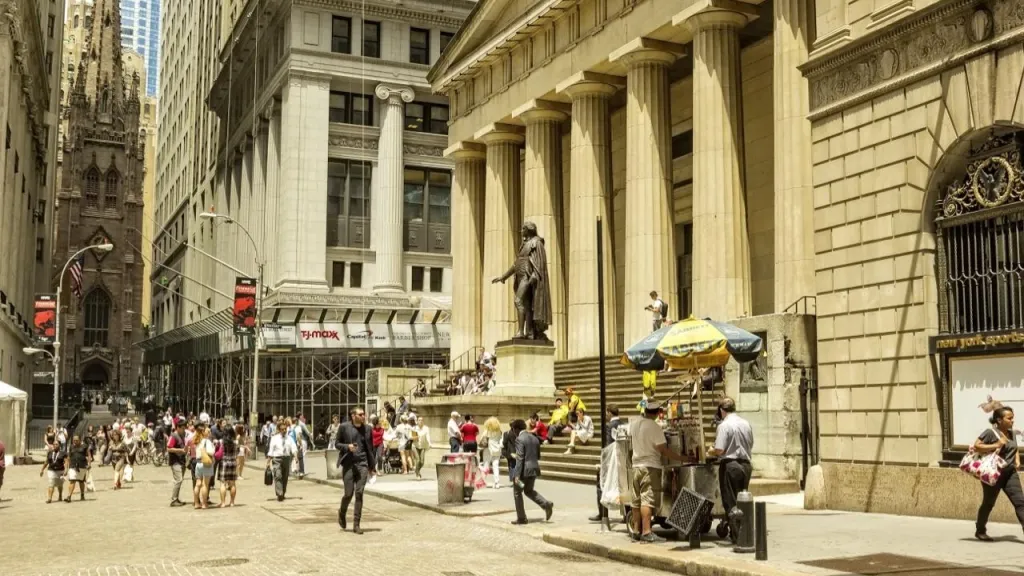Charles Schwab believes the market is going back to the 90s. What should investors watch out for?
Private investor excitement and increased uncertainty have alarmed analysts

The current stock market environment is increasingly conjuring up images of the late 1990s, when a bubble was inflating in tech stocks, according to Charles Schwab strategist Katie Jones. In the new edition of the On Investing podcast, she and her colleague Liz Ann Saunders discuss why retail investors' appetite for risk has increased and what signals should not be ignored.
Is that a bubble?
"Sometimes I feel like we're in the late '90s," Katie Jones, chief fixed-income strategist at Charles Schwab, says on the podcast. - Back then, there was the dot-com bubble and everything was rising relentlessly. It seemed like it was never going to end - and then it did."
It's too early to talk about a bubble now, Jones emphasizes. But the combination of factors - rapid redemptions of drawdowns, overvaluation of corporate securities and weak reaction to macroeconomic risks - reminds much of that era. The market is growing almost automatically, and that raises questions about its sustainability.
An additional reason for caution is the divergence between "hard" and "soft" economic indicators, adds Liz Ann Saunders, managing director and chief investment strategist at Charles Schwab. The former include quantitative data like GDP, employment and sales. The latter include business and consumer confidence indices based on surveys. Now this difference is starting to narrow: in May, the expectations component of the consumer confidence index showed the strongest growth in four years. This may be both a sign of a recovery in sentiment and a harbinger of a correction in more stable indicators.
Why investors become gamblers
According to Saunders, a key trend in recent months has been the return of the buy the dip strategy. Private investors are actively buying up downtrodden stocks, especially those that have long been popular with retail traders. According to the strategist, the focus is not only on technology stocks, but also on riskier instruments, including leveraged exchange-traded funds (ETFs), which use leverage or derivatives to boost returns. They can deliver enhanced returns in the short term, but they carry increased risks and can lose value quickly - especially with market volatility. Saunders notes that in many cases, this behavior by private investors is closer to gambling than to calculation.
Strategist Charles Schwab attributes the increased investor activity to the habits formed during the pandemic, when brokers canceled commissions for transactions and many newcomers came to the market. Now this audience is coming back: even a slight decrease in quotations is perceived by them as an opportunity to enter. An example is the market's sharp rebound after the April 9 drawdown: U.S. President Donald Trump promised to postpone duties, and this relieved the tension - investors quickly returned to buying.
At the same time, despite negative expectations in spring, there was no mass withdrawal from shares. Investors not only did not sell, but on the contrary - they used the correction as a reason to increase their positions. According to Saunders, this creates a strong emotional background and increases the market's sensitivity to short-term fluctuations.
What's in store for the market
Meanwhile, fundamental uncertainty has not gone away: the US bond market remains under pressure despite a pause in the Federal Reserve's policy easing. The regulator has suspended the rate hike cycle and adopted a wait-and-see attitude until there are signs of a sustained slowdown in inflation and the economy.
However, markets are in no hurry to build into expectations of a soon-to-be policy easing. Yields on US bonds remain high - also due to budget uncertainty. Although the draft budget has already passed the House of Representatives, in the US it is only the first stage: the document still has to overcome the vote in the Senate. The final parameters remain unclear, and market participants prefer not to take risks, postponing purchases of long-term securities.
According to Katie Jones, in such conditions the market becomes especially sensitive to news: even small signals from Washington - on budget, duties or inflation - can change expectations and provoke jumps in yields. So far, there are no specifics, and no sustainable demand for long-term bonds is forming.
Against this background, the corporate debt market stands out: it looks more stable. Credit spreads - the difference between the yields of corporate and government securities - remain narrow. This suggests that investors still trust large companies, even if they are cautious about political and macroeconomic risks.
What are your predictions?
Schwab analysts recognize that it is impossible to predict market dynamics when the political and economic agenda is changing almost daily. The main thing is to understand how risks are distributed. If investors become overconfident, even a minor negative event can trigger a sharp correction. And in a period of general pessimism - on the contrary, even a limited positive event can give a reason for growth.
For international investors, it is important to remember that a Fed pause is no guarantee of stability. High interest rates, the unresolved budget issue and the possibility of tariff moves by the U.S. continue to create tensions - both in the U.S. economy and beyond.
Against this backdrop, Liz Ann Saunders recommends that private investors remain disciplined: not to succumb to short-term market impulses, not to focus only on the behavior of other participants, and to avoid excessive concentration in certain sectors. In her words, she calls for "trusting the process" - that is, strategizing not around the current noise, but around long-term goals, diversification and prudent risk assessment.
